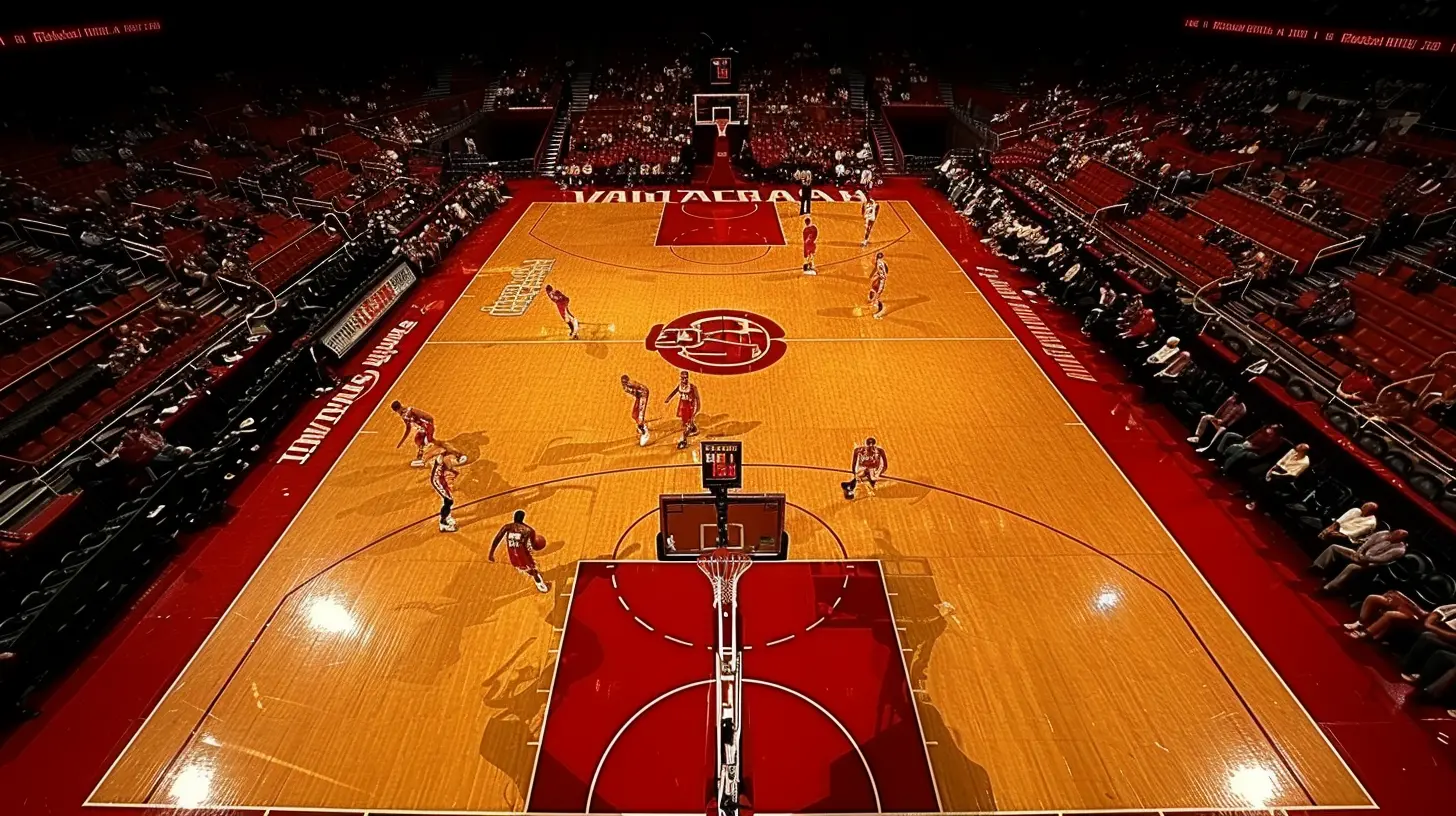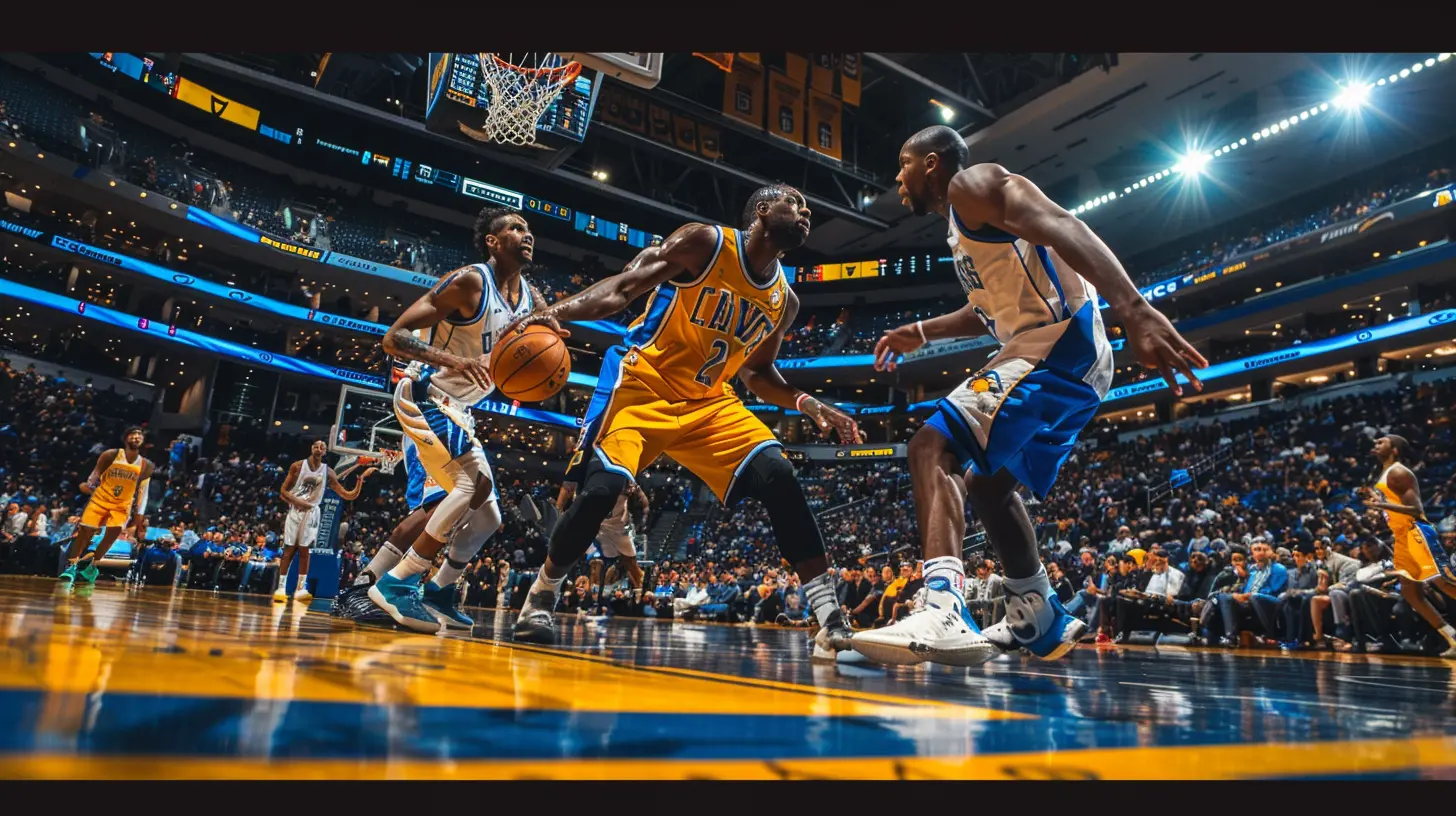How to Build an Effective Zone Defense in Basketball
10 November 2025
Basketball is a game of chess—only it's played at full speed with sweat, sneakers screeching on hardwood, and a ball that seems to defy physics at times. Zone defense? That’s your secret weapon. A well-built zone can confuse even the most skilled offenses, disrupt rhythm, and turn games upside down.
So how do you build a zone defense that’s more than just bodies guarding empty space? How do you craft a wall that stands strong in the face of relentless offensive attacks? Grab your clipboard, tighten your laces, and let’s break it down.
🧠 First, What Is Zone Defense?
Before we start stacking defensive bricks like we're building a fortress, let’s clarify what a zone defense actually is.In a zone defense, each player is responsible for guarding a specific area, not a specific player. That’s the key—and the mystery. It’s less about chasing someone around the court and more about controlling space. Think of it like a spider web: attackers enter, but they rarely exit without a struggle.
Now, compare that to man-to-man defense, where you're glued to your matchup tighter than peanut butter on a sandwich (and just as sticky, if you're doing it right). Zone is more about smarts, communication, and timing.
🥋 Why Even Use Zone Defense?
Good question. Why bother with zone in a world dominated by fast-paced offenses and lights-out shooters?Well, here’s the thing. Zone defense:
- Clogs driving lanes (no more easy baskets!)
- Hides weaker defenders
- Disrupts passing rhythm
- Forces outside shots
- Conserves player energy
And most importantly, it’s like throwing a puzzle on the court. Teams used to man-to-man struggle against a tight, communicative zone. It's a curveball, and sometimes, it's the ice water that cools down a hot offense.
🏗️ Laying the Foundation: The Mindset Behind Zone
Building an effective zone defense is more than just drawing Xs and Os on a whiteboard.It starts with mentality.
You need players who:
- Trust each other
- Talk constantly
- Move with purpose (no standing around!)
- Understand help principles
Zone isn’t passive—it’s strategic. Every rotation, every movement is a calculated decision.
🧩 Choosing Your Zone: The Different Types
Zone defense isn’t just one thing. There are layers to the madness. Let’s pull back the curtain.🌀 2-3 Zone (The Classic)
Setup: Two guards at the top, three bigs down low.Strengths:
- Protects the paint
- Great against slashers
- Good for hiding slow-footed players
Weaknesses:
- Vulnerable to corner threes
- Can get stretched by good shooters
Use it when the other team lacks long-range snipers.
🛡️ 3-2 Zone
Setup: Three up top, two down low.Strengths:
- Excellent for guarding the perimeter
- Ideal against teams with sharp shooters
Weaknesses:
- Exposes the baseline
- Can leak rebounds if your bottom two are undersized
Use this when you’re facing a team that lives by the three.
🧱 1-3-1 Zone (The Trap)
Setup: One on top, three across the midline, one underneath.Strengths:
- Disruptive
- Great for trapping
- Forces turnovers
Weaknesses:
- Weak corners
- Can be beaten by ball movement
Use it as a change-up. It’s the defense equivalent of a trick play—pull it out when you need to shake things up.
🚀 Match-Up Zone
This is the hybrid. It looks like a zone but acts like man-to-man.Strengths:
- Confusing
- Adaptive
- Functions like man with zone principles
Weaknesses:
- Tough to teach
- Requires basketball IQ
Use this when you’ve got smart, athletic players who can communicate and adapt on the fly.
🛠️ How to Build It: Step-By-Step
Let’s break it down. You want an effective zone defense? Build it brick by brick.1. Start with Communication
This is the heartbeat. No talking? Your zone crumbles.Players should be calling things out constantly:
- “Middle!”
- “Cutter!”
- “Ball-side corner!”
- “Screen left!”
Teach your squad to talk like they’re narrating the game in real time.
2. Establish the Shell
Drill your team into understanding where they should be in their zone. This is their area of responsibility—their house. No one gets in without a fight.Use cones or markers at practice. Choreograph every movement. Make it muscle memory.
3. Repetition, Repetition, Repetition
Zone defense is about cohesion. That takes reps. Run drills like:- Shell drill
- Ball movement simulation
- Zone slides with rotation
The more your players move together, the harder they are to break.
4. Teach Closeouts (The RIGHT Way)
When the ball swings to the perimeter, you need sharp, explosive closeouts. That means:- Short, choppy steps
- Hands up
- Controlled approach (don’t get blown by!)
Teach your players to contest without fouling. Swiping is for Netflix, not defense.
5. Trap Selectively
Zone gives you control. That means you can bait the offense.Trap in the corners. Trap on the wings. But be smart. The trap is your fire—you want to control it, not have it burn your house down.
6. Rebound Like Wolves
Zone can make rebounding tricky. Players aren’t glued to someone, so boxing out becomes harder.Solution? Preach gang rebounding. Everyone crashes. Everyone finds a body. Treat that ball like it owes you money.
🧠 Advanced Concepts: Take It Up a Notch
You’ve built the basics. Now sharpen your sword.📦 Collapsing on Penetration
When an attacker gets into the paint, collapse hard, but anticipate the kick-out. It’s like a slingshot—compress then explode back out.🔁 Rotations and Recovery
Ball moves. You move. Simple.If you’re late on rotations, the offense will pick you apart. Drill your players to move instinctively with the ball—like shadows.
💥 Switching to Zone Mid-Game
Want to mess with the other coach’s head? Flip the script mid-game. Switch from man to zone out of a timeout. Or run a zone after made baskets and man on misses.Keep ‘em guessing.
🧪 Practice Plans That Work
Build your practices around layering the defense. Here’s a rough outline:Day 1: Zone footwork + shell drill
Day 2: Add ball movement, simulate offensive attacks
Day 3: Introduce traps, scrimmage with zone focus
Day 4: Situational defense (late-game scenarios, adjustments)
Day 5: Film breakdown + execution
And always, always, ALWAYS reward communication and hustle in drills. Defense is effort, not glory.
🚨 Common Pitfalls to Avoid
Zone defense gets a bad rep when it's done wrong. Don’t make these rookie mistakes:- Standing around: Zone is active, not passive.
- Over-helping: Defenders leave their zones too early.
- No rebounding strategy: Leads to second-chance nightmares.
- Poor communication: Silence equals chaos.
- Lack of adjustments: You can’t run the same zone against every team.
🧠 Real Talk: When Zone Just Doesn’t Work
Here’s the truth—nothing is bulletproof.If you're getting lit up by a team that can shoot from deep and pass like the Harlem Globetrotters, it might be time to switch it up. Don’t cling to the zone out of pride. It's just one tool in your kit.
Know when to adjust. Be flexible. And don’t be afraid to hybridize your defense.
🏀 The Zone Mentality: Buy-In Is Everything
More than schemes or drills, the real magic of a great zone is the buy-in. Players have to believe. They have to trust each other.A great zone is like a symphony—everyone playing a different note, but in harmony.
So hold them accountable. Praise the effort. And make sure every player knows: you’re not just guarding space—you’re guarding pride, together.
Final Thoughts
Building an effective zone defense in basketball is like brewing a secret potion. You mix patience, precision, communication, and timing. Done right, it becomes an invisible wall—unshakable and frustrating for any offense.It’s not flashy. It doesn’t fill the highlight reel. But it wins games.
Next time you watch a team flailing against a zone and taking wild threes at the buzzer, smile. That could be your team causing that chaos.
And now you know how to build it.
all images in this post were generated using AI tools
Category:
TacticsAuthor:

Ruben McCloud
Discussion
rate this article
1 comments
Abigail McTavish
Mastering a zone defense isn't just about strategy; it's about teamwork, communication, and commitment. Embrace the challenge, trust your teammates, and dictate the game. With discipline and unity, you can transform your defense into an impenetrable fortress that stifles opponents and inspires victory!
December 2, 2025 at 5:50 AM


